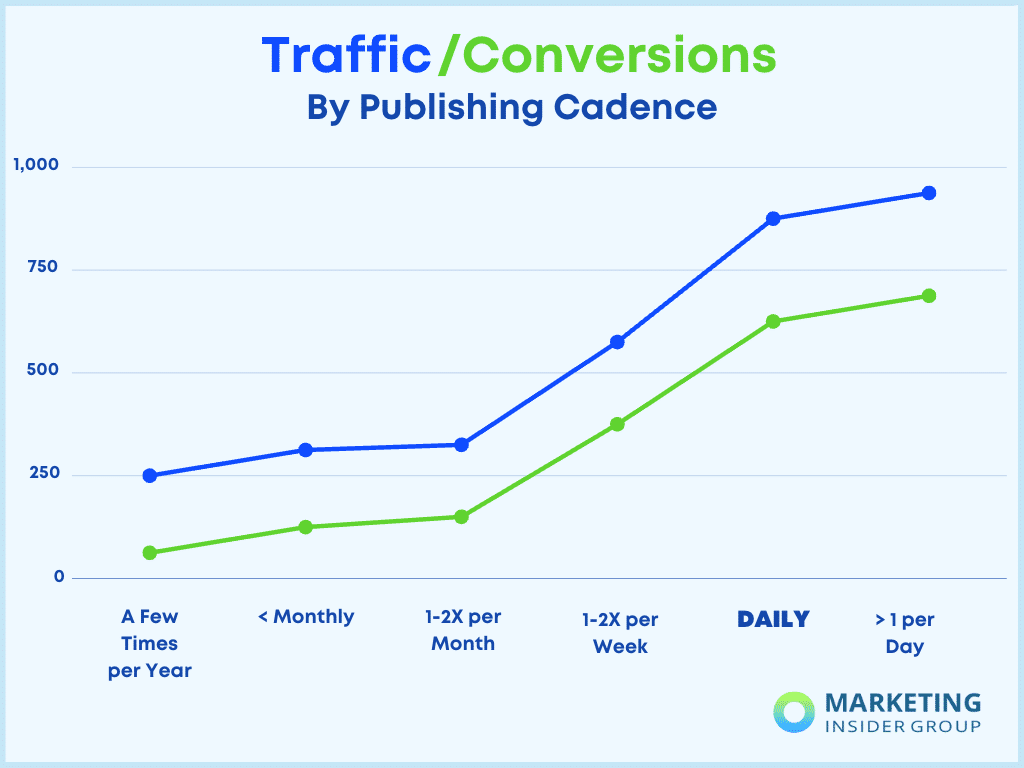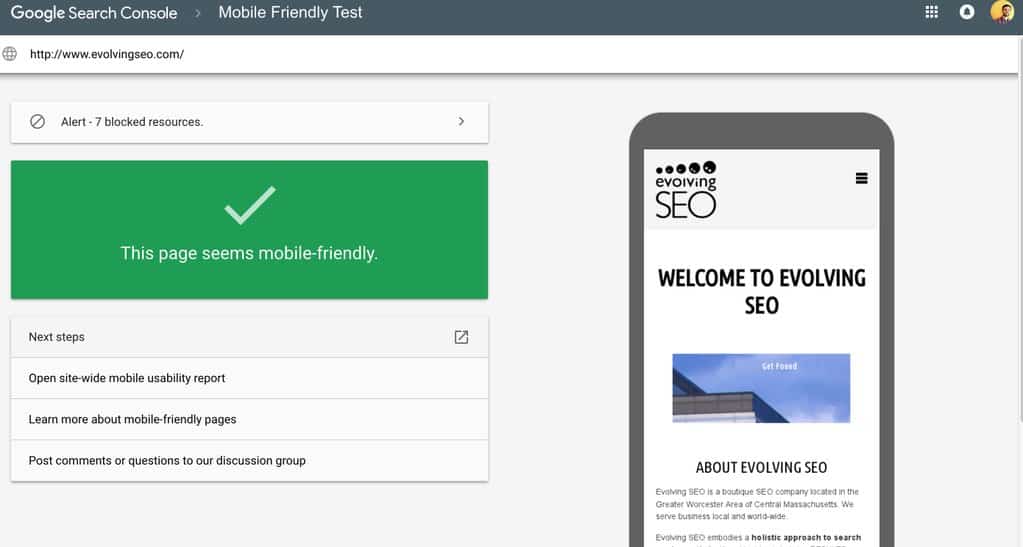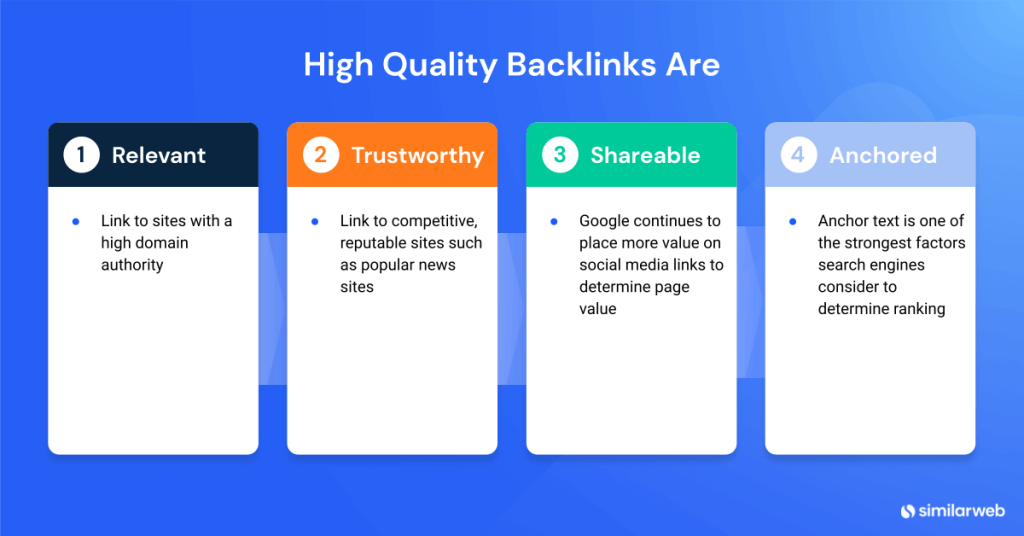
Google’s thrown down the gauntlet: Content marketing is king of the SEO hill. If your business has been slow to give content marketing the crown in your marketing strategy, it’s time to hustle.
The folks at Google aren’t being subtle about it. Their SEO Starter Guide is pretty clear: Awesome content influences your site more than any other factor. We’re talking blogs, tweets, emails, forum chats, you name it.
Not convinced? The numbers speak for themselves. Content marketing can shoot your conversion rates through the roof, costing 62% less than traditional marketing while offering six times the conversions.
So today, we’re guiding you through the essentials of harnessing the power of content marketing, from publishing top-notch content consistently to optimizing your website’s structure and earning backlinks that amplify your content’s authority.
Quick Takeaways
- Quality content is now Google’s top ranking criterion, emphasizing its impact on user satisfaction and search rankings.
- Effective content optimization involves more than just keywords; it’s about creating valuable, audience-centric content.
- Deep audience research is fundamental to developing content that aligns with user needs and Google’s relevance criteria.
- Consistently publishing quality content increases web traffic and conversions, boosting search rankings and online visibility.
Realize the Importance of Quality Content Marketing as a Ranking Factor
Video Source: Ahrefs
Why do you think Google has made quality content its number-one ranking signal? Look at the reason Google is in business.
Google’s success rests on one thing: its users finding the information they need to quench their thirst for knowledge and solve their problems. Users find that information in published content, whether in blog posts, forums, videos, social media conversations, email newsletters, or other forms of digital communication.
The better the content, the more satisfied Google’s users will be. Google’s entire business model rests on the quality of the content people post online. Creating world-class content, then, must be your company’s number one marketing priority.
But, no matter how good your content is, it won’t connect with your target audience if they can’t find you. That’s why it’s critical that you optimize your content for your target market’s searches.
Optimize Your Content for SEO
Gone are the days where you could just load up your content with keywords and call it a day. Google found out years ago that keyword-stuffed content made for an awkward read. Not the stellar user experience they wanted to deliver to their users.
Focus on your target customer, and you’ll likely catch search engines’ attention as well.
Conduct Audience Research
Video Source: Semruh
So, the best way to optimize your content is to start with audience research. When you make your customers the hub around which all your content revolves, you’re ready to create content that aligns with their needs and interests.
- Get to know your audience and their needs: If you haven’t yet created buyer personas, do so now. It will give you a glimpse of your target audience’s tastes, likes, the kinds of problems that keep them up at night, and even the phrasing they’ll likely use when they search for something.
- Brainstorm topics that address their interests: Look for solutions within your niche that can solve their problems or satisfy their curiosity. Plan your content around those topics.
Do Keyword Research
Once you have a general idea of what kinds of content will meet your audience’s needs, you need to narrow down your topics.
Keyword research isn’t only about figuring out what words should be in your content to attract search engines’ virtual eyeballs. It can also help guide your creative process by generating ideas.
First, ask yourself some questions.
What questions does your target audience ask when they search for your products and services? What words do they use when they search?
For example, if your typical customers are heavy smartphone users, they’ll use voice search. Natural language searches are usually in question form, like “Alexa, what kinds of cameras are best for nature shots?”
On the other hand, if your customers are usually at work in front of a laptop or desktop computer when they’re searching, they’d be more apt to type in a more traditional search, such as “accounting software for small businesses.”
Once you have a list of the keywords your audience is likely to use when they search for businesses like yours, enter them in Google’s search bar, and a list of related search terms will pop up. These terms can help you pin down topics that will interest your prospects.
Google’s Keyword Planner can also help you generate topic ideas and guide the structure of your content. Using phrases that relate to your main topic in your titles and subheaders can serve as an outline of sorts as you write. Such headings also help guide your readers as they skim through your article.
If your budget can stretch some, invest in one or more paid keyword research tools. Here are some of my favorites:
Semrush
Video Source: Marketing Island
This keyword research giant can help you perform on-page SEO, audit your current content, generate ideas for improvement, and analyze your competitors’ keyword usage and performance. If local searches are critical to your success, Semrush can help you optimize your content for local search.
KWFinder
Video Source: JT Smith
Finding keywords that you can easily rank for can open up new vistas when planning content. This tool helps you discover long-tail, more detailed keyphrases related to your products and services that will help you create innovative content and get you to the top of Google searches.
Ahrefs
Video Source: Ahrefs
Ahrefs helps you optimize your content with a site audit, explore what your prospects are searching for online, and research the keywords the top-performing publishers in your industry use in their content. This tool also offers tutorial videos, how-to articles, and other learning opportunities that can help you maximize the value you get from your purchase. For that reason, it is the perfect solution for small businesses that don’t have the budget for an in-house SEO team.
Finally, Start Creating Top-Quality Content
Now that you have a blueprint for where you want to go, it’s time to create content that will delight your audience and attract search engines.
Use Google’s Content Quality Guidelines
Google has two main guidelines it uses to evaluate your content’s quality.
1. Experience, Expertise, Authoritativeness, and Trustworthiness (EEAT)

Image Source: Fat Joe
Google expects its top-ranking content to demonstrate that the content comes from a wealth of expertise, positions the content creator as an authority in their field, and serves as a trustworthy source of information. Such content provides users with information they can trust and put to use.
2. Your Money or Your Life (YMYL)
Your audience, like people everywhere, places a higher value on content that can help them make (or save) more money, increase their physical and mental health, and infuse happiness in their lives. For that reason, Google uses these criteria to rank content – so keep that in mind as you create.
Using these factors to plan, create, and publish content, along with your focus keywords, will help your content rank higher in your target audience’s Google searches. As a result, they’ll be able to find your content and recommend it to their friends and colleagues.
If your content meets these criteria, other industry leaders might even cite your work in their own blog posts and other publications, earning you valuable backlinks with every mention.
Follow Content Creation Best Practices
No matter how helpful your topic might be to your target customers, they won’t read your blog posts to the end if the content is boring, hard to read, or contains glaring errors in grammar or fact.
There’s No Substitute for Good Writing
You might be the world’s foremost expert in your field, but if you can’t write a clever turn of phrase to save your soul, consider turning the writing process over to a team of professional writers. Create a rough draft of what you want to say, provide them with any original research or links to trusted industry sources of data that support your claims, and let the writing pros do the heavy lifting.
Professional writers can turn even the most yawn-worthy copy into a compelling story – one your prospects and customers will read to the very end. Even better, they’ll share it with others, building your site traffic with every share.
Make It Approachable
Even though your target audience might be highly educated, they’re busy people. They don’t have time to sift through complex prose and a mountain of words.
Write content at an average reading level that won’t make it a chore to unpack what you’re saying. Avoid the jargon and technical terms – or at least define them in ways even newbies can understand.
Include a Call to Action and a Compelling Meta Description
Video Source: Neil Patel
Don’t forget to create a compelling meta description for your content. Meta descriptions are the text you see along with the links on search results.
Include your focus keyword and a call to action that promises vital information to your readers. Then make sure your content delivers all the goods your meta description promises.
Always end your article with a call to action. People will want to know what to do to solve their problems or learn more about the topic.
Give them what they want by inviting them to engage further – with a link to an ebook in exchange for signing up for your email newsletter, to sign up for a free consultation, or even a link to a purchase page.
Make the next step relevant to their search. For example, if the target audience for your content is at the top of the sales funnel, they likely won’t want to buy your product right away. Draw them into a trusting business relationship by offering them even more value through more detailed content.
However, if they’re ready to buy, by all means, offer them that opportunity.
Make It Evergreen
Of course, you’ll need some of your content to reflect current events, holidays, and other time-sensitive issues. However, devote the lion’s share of your time to content that will read as fresh 10 years from now as it does today.
Get a Second Pair of Eyes Before You Hit “Publish”
Grammatical errors and typos can turn a great article into a piece of trash – at least in its readers’ eyes. Always have someone well-versed in the English language (or whatever language you write in) edit your content before you expose the public to it.
Design Your Content to Attract and Retain Attention
Today’s web audiences like to skim content before they take a deep dive into it. Use headings, subheadings, bullet points, and numbers to guide their eyes to your main points as they skim.
Include visuals, such as infographics, videos, and images to catch your reader’s eye, provide information, and keep them engaged in your content. Since at least 65% of the population consists of visual learners, using visuals to convey information is a must if you want them to remember what they read.
Be sure to include alt text that includes your focus keyword for extra SEO clout for each image. Alt text also helps visually impaired people who use screen readers understand what each image conveys – opening your audience up to an even more diverse set of people.
Publish Quality Content Consistently for Optimum Results
Multiple studies show that publishing quality content 2 to 4 times a week yields the highest return in both web traffic and conversions. Higher web traffic fuels your search rankings to soar even higher.

Pairing quality with consistency delivers faster, longer-lasting results. But you might not have the resources to publish content that often. After all, you have a business to run.
But there’s a solution: partnering with a content marketing agency. These agencies excel in producing high-quality, engaging content that aligns with your brand, freeing you to concentrate on your business while they handle the content strategy. This collaboration ensures your content marketing remains robust, driving your SEO efforts and engaging your audience effectively.
More Top Google Ranking Factors
Page Loading Speed
Page loading speed is crucial. Google prioritizes fast-loading websites because that’s what users prefer. If your site is slow, people leave, and your rankings can drop.
So, how can you speed things up? First, check your current speed with tools like Google PageSpeed Insights. Then, focus on quick fixes:
- Compress your images
- Minimize code
- Leverage browser caching
Simple changes can significantly boost speed, enhancing user experience and your SEO rankings.
Mobile Friendliness
Mobile friendliness is essential. With more internet users on mobile devices, Google rewards sites that work well on smartphones. A mobile-friendly site is easy to read and navigate on a small screen, no zooming or endless scrolling required.
Test your site’s mobile responsiveness with Google’s Mobile-Friendly Test.

Image Source: Search Engine Roundtable
If it’s lacking, it’s time for a redesign. Ensuring your site is mobile-friendly improves user experience and supports better search engine rankings.
Core Web Vitals
Core Web Vitals are fairly new to the SEO scene, introduced by Google to size up your website’s user experience. We’re talking about three big players here:
- Largest Contentful Paint (LCP)
- First Input Delay (FID)
- Cumulative Layout Shift (CLS)
In plain English: They measure how fast your page loads, how quickly it becomes interactive, and how stable the layout is as it loads.
Why should you care? Because Google considers these factors when ranking your site. If you want to stay competitive, use tools like Google’s PageSpeed Insights or Lighthouse to check your Core Web Vitals and make necessary improvements. It’s not just about making Google happy; it’s about ensuring your visitors have a smooth and enjoyable experience on your site.
Page Freshness
Think of Page Freshness as the “best by” date for your content. Google loves fresh, updated content because it’s more likely to be relevant and valuable to users.
This doesn’t mean you need to churn out new content every day. Instead, focus on keeping your existing content up-to-date.
This is particularly crucial for topics that change rapidly or are time-sensitive. Refreshing old posts, updating facts, or adding new insights can breathe new life into your pages and boost your rankings.
So, take a look at your older content. Could it use a refresh? Keeping your content fresh is a smart way to stay on Google’s good side and keep your audience engaged.
Domain Authority
Domain Authority (DA) is like your website’s reputation score in the eyes of Google. It’s about how trustworthy and authoritative your site appears based on its backlink profile and overall online presence. High DA means Google is more likely to trust your site and rank it higher.
How do you boost this score? Focus on earning high-quality backlinks from reputable sites in your niche. It’s not about the quantity, but the quality. Each backlink is a vote of confidence in your content. Also, consistently produce engaging, authoritative content that others want to link to.

Image Source: SimilarWeb
Keep in mind, improving your DA is a marathon, not a sprint, but it’s a race worth running for your site’s SEO health.
Social Signals & Engagement
While Google maintains that social signals aren’t a direct ranking factor, they contribute to your online visibility and authority.
When your content gets shared, liked, or commented on, it not only expands your reach, but also increases the likelihood of earning backlinks and boosting your site’s authority. Plus, engagement on social media can drive traffic to your site, indirectly benefiting your SEO.
So, encourage sharing, engage with your audience, and make your content easily shareable. A vibrant social media presence can amplify your content and support your overall SEO strategy.
Website Security
Website security isn’t just about protecting your visitors—it’s also a critical ranking factor. Google takes it seriously, and so should you.
Ensuring your site uses HTTPS, symbolized by the lock icon next to your URL, is a must. It encrypts data between your visitors and your server, making it harder for bad actors to snoop.
If you’re still on HTTP, it’s time for an upgrade. Not only does HTTPS secure your site, but it also boosts your credibility in Google’s eyes, which can improve your rankings. Think of it as securing your digital premises in the same way you’d lock your doors at night.
User Experience (UX)
User Experience (UX) is all about how people feel when they visit your website. Google’s smart; it can gauge if visitors are having a good time on your site. How? By looking at signals like:
- How long people stay
- How quickly they leave (bounce rate)
- How they interact with your content
A site that’s a joy to use keeps people around longer, reducing bounce rates and increasing the chances of engagement and conversion.
Make sure your website is intuitive, fast, and provides valuable content. This not only delights your visitors, but also signals to Google that your site is top-notch, potentially boosting your rankings. Remember, a great UX is good for both your visitors and your SEO.
Content Marketing: The Key to Unlocking Google’s Top Rankings
Quality content marketing is pivotal as a ranking factor for Google. It’s about creating value that resonates with your audience and aligns with Google’s focus on delivering relevant, user-friendly information.
Ensure your content is accessible, secure, and engages users across platforms to not just satisfy search algorithms but to genuinely connect and provide lasting value to your audience. This approach not only boosts your SEO, but also strengthens your relationship with your target market.
Want to start winning at content marketing? The first step is to create high quality content that engages your audience. Get started today by checking out our weekly blog content service, or schedule a free consultation now to learn more!


0 Commentaires